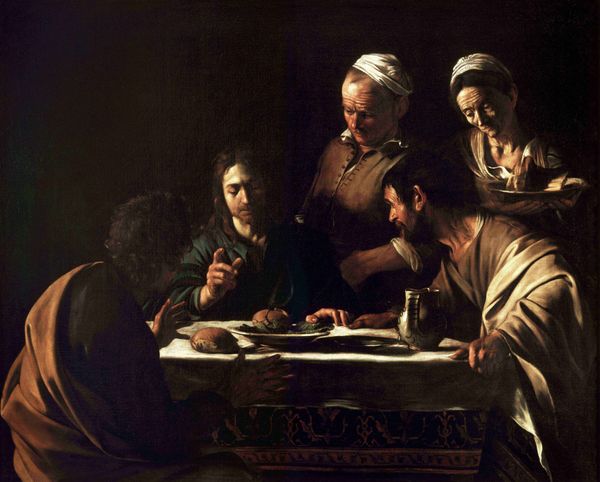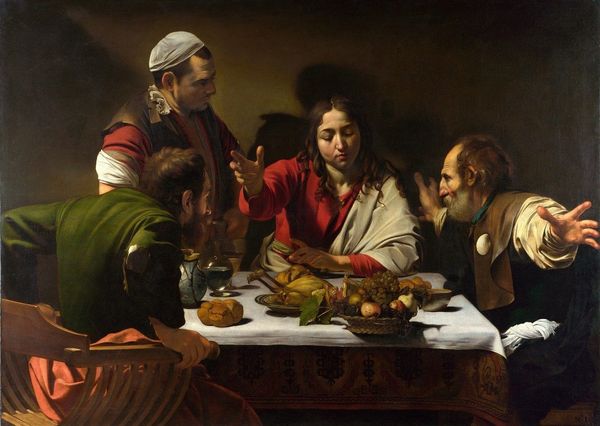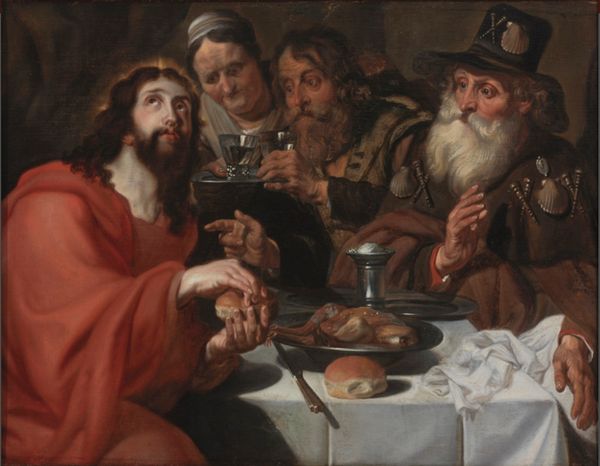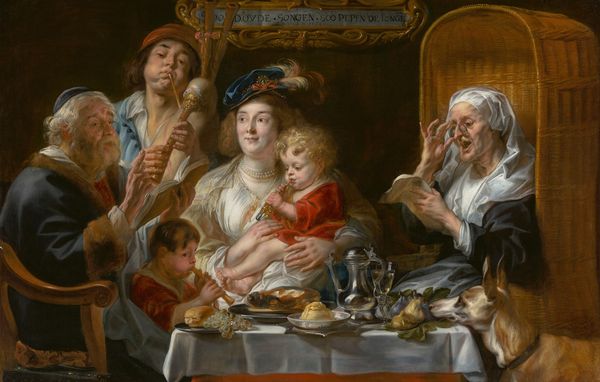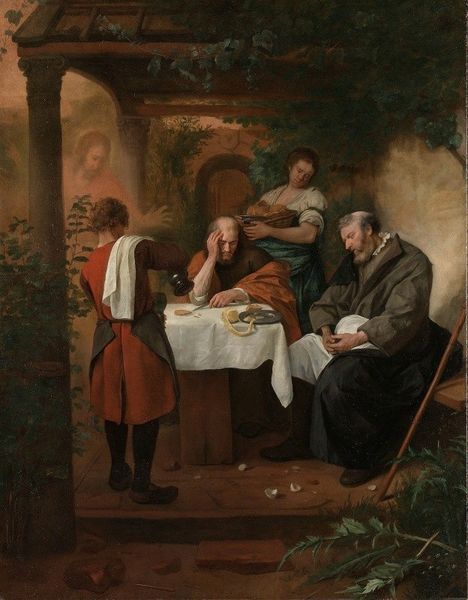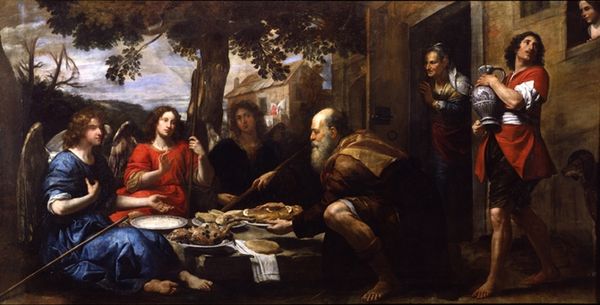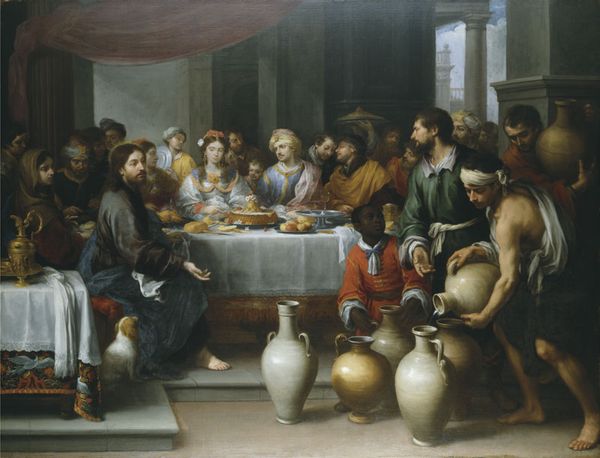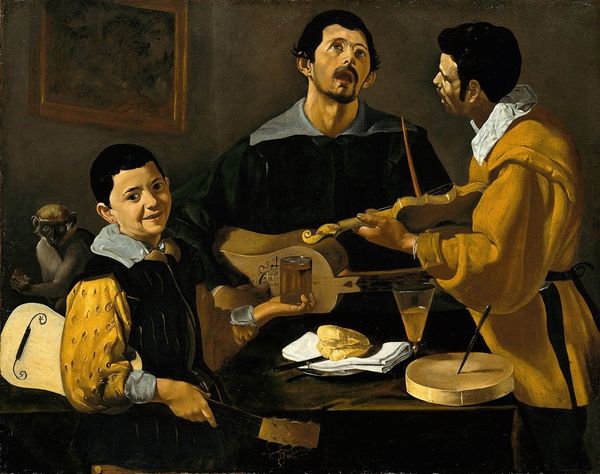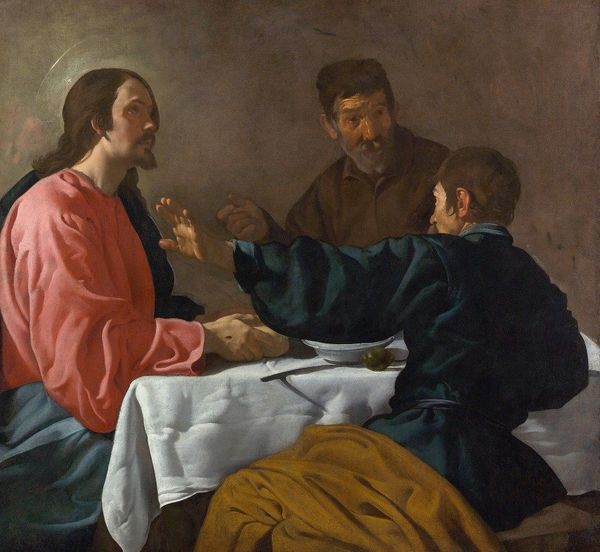
oil-paint
#
baroque
#
oil-paint
#
figuration
#
genre-painting
#
history-painting
#
realism
Dimensions: 112 x 96 cm
Copyright: Public domain
Editor: Here we have "The Lunch" by Diego Velázquez, created around 1620 using oil paints. It strikes me as a remarkably candid scene, almost like a snapshot of daily life. The figures seem very engaged in their actions. What's your interpretation of this work? Curator: Looking at "The Lunch", I am drawn to how Velázquez presents everyday life, but within a complex social context. It reflects the booming genre painting market of the time. How do we understand Velázquez positioning himself within it, considering the themes of labor, service and society's structure? Editor: That’s interesting. I hadn’t considered how it fit into a broader art market trend. So, this wasn't just about depicting a meal? Curator: Not at all. Observe the figures. They are not idealized. Note how light highlights the different fabrics, and worn garments on the man to the left suggest a specific social status and even profession. The painting’s power rests on its realism, but also in how it makes this accessible to those viewing the work in the marketplace. What do you notice about the relationship between the figures? Editor: There is certainly a contrast between the figures, with the older gentleman and what seems like much younger people with the clear master-servant dynamic and interplay with the viewers through expressions... How did Velazquez see his position in this mix of societal views when this was painted? Curator: Velázquez, then at a critical point early in his career, was trying to negotiate his place in the art world and how such interactions were framed at the time. This is more than a simple genre scene; it's a carefully constructed observation on labour and class relations, presented within the visual codes understandable to the audiences of 17th-century Spain. And where was this presented? Editor: Learning about the historical market for these images does change how I see the painting. I realize how many layers of information and cultural messages are embedded in what appears to be a slice-of-life image. Curator: Precisely. The painting invites you to consider how everyday moments were represented, consumed, and interpreted through the lens of socio-economic dynamics, influencing its historical reception.
